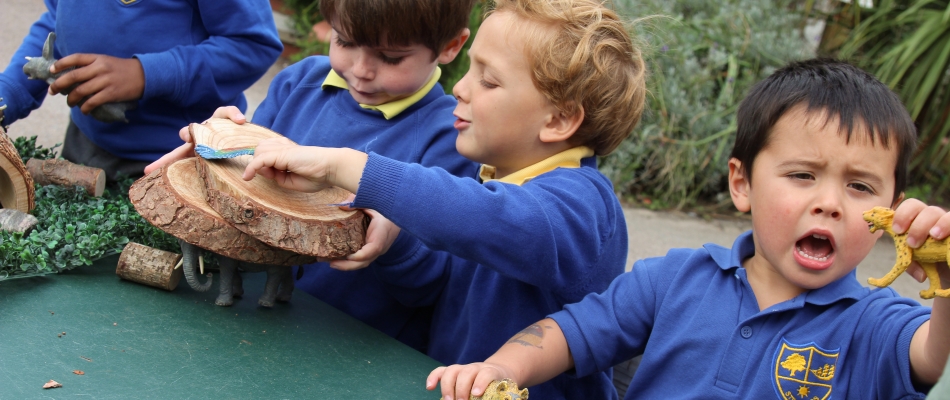Computing
Computing Curriculum Intent
At Stillness Infant School we believe that a strong Early Years and Key Stage One Computing Curriculum is vital in preparing the children for the rest of their education and their eventual career. To be the well-rounded citizens of tomorrow, the children don’t just need to know how to use and express themselves with Information Technology, they need to be able to reflect on how best to use it safely, responsibly and kindly.
- Our Values are key at the beginning of the children’s digital literacy, as they start to become active participants in a digital world; becoming responsible, competent, confident and creative users of information and communication technology. We use the prism of our Values for the children to reflect on what kind of a person they will eventually be on-line and what kind, creative, empathetic participation in a digital world would look like. This involves discussions and role play in Computing and PSHE lessons, as well as parental engagement, including workshops, usually during Safer Internet Week.
- Through the range of choices we give the children within Computing, we are able to reflect our Diverse Community. For instance, the children can choose which celebrations are important to their family before they design and digitally illustrate a unique card featuring that celebration.
- We make sure from EYFS to Y2, Computing is progressive and sequential. Before beginning to use technology purposefully to create, organise, store, manipulate and retrieve digital content, we introduce the concepts of what information technology is and how to recognise common uses of it beyond the school, helping the children see how the digital world intersects with their everyday life. With the concepts behind Computing being introduced before using any actual technology, the children acquire skills with a greater ease and fluidity. They can apply skills from one area to many others because of their understanding of Computing’s underpinnings. An ambitious teaching sequence such as this makes keys skills like predicting the behaviour of simple programs and debugging simple programmes more intuitive, better retained and easier to further develop.
- Vocabulary is key to Computing. Having the vocabulary to explain why what happens when you use a mouse to click on an icon, shows the child has understood what is happening and is not just following a sequence of learnt actions. Understanding exactly how you are manipulating digital technology to purposefully create, organise, store, manipulate and retrieve digital content means the children can express themselves accurately and with greater creativity.
- We know that a Broad Digital Experience can be fundamental in acquiring the cultural capital that children will need to succeed in life, so we proactively offer a broad digital experience, knowing that the amount and quality of digital exposure differs wildly from child to child. From EYFS upwards the children have access to meaningful digital technological experiences. This can mean working with BeeBots or attractive, age appropriate Maths or English games on the classrooms’ interactive whiteboards to using tablets to research topics or record videos for editing and presenting.
- As the children move up through the school reading digitally is something that is prioritised in a number of lessons as well as Computing, especially English. We teach the children the similarities and differences between reading from the page and the screen and how to be critical of what they might read on-line; teaching them to be critical of what they read and an awareness of sources.
Computing Curriculum Implementation
In EYFS the children are provided with meaningful technological experiences. We know that the amount of technological experiences can differ greatly from child to child, so we ensure the amount and level of these experiences suits each child. Before the children explore the Information Technology on offer in the EYFS, we give them an idea of its underpinnings to help contextualise their exploration. For example the children plan out a route for a BeeBot from Little Red Riding Hood’s home to her grandmother’s. The children are introduced to the concept of algorithms in age appropriate language and how programable devices function.
As with EYFS, before the children begin using technology in earnest, we endeavour to explain to the children the key concepts behind that technology, so that rather than memorising a sequence of actions to achieve a result (say, saving or opening a piece of work) they understand what technology they are using to what purpose. This is reiterated throughout the hands-on lessons, so that key vocabulary goes hand in hand with clicking on icons, enforcing the children’s understanding and capabilities.
Making sure that the teaching of Computing remains progressive and sequential, means that the Computing lessons do not always directly relate to the topic being taught, but whenever the skills we are teaching in Computing that half term can be delivered using the topic’s theme, we make sure they are. Children can develop depth in their knowledge and skills over the duration of each of their computing topics. Teachers have adapted the Rising Stars scheme of work to meet the needs of our children.
We ensure that we plan a wide range of lessons when teaching Computing. This could involve using the Hall for role-play, the playground or a food preparation area for algorithm work, as well as the Computer Suite for designing a PowerPoint presentation or Ipads in the classrooms. All year groups can use a range of devices and programmes across the wider curriculum, as well as in discrete computing lessons. Employing cross-curricular links motivates the children and supports them to make connections, practise and remember the steps they have been taught. The lessons are delivered either as a class or in small groups, depending on the outcome of the learning. We try to give the children greater responsibility for all the content of the work they produce. So, if we are editing and manipulating photographs, we ensure it is photographs that the children have taken that are being changed.

